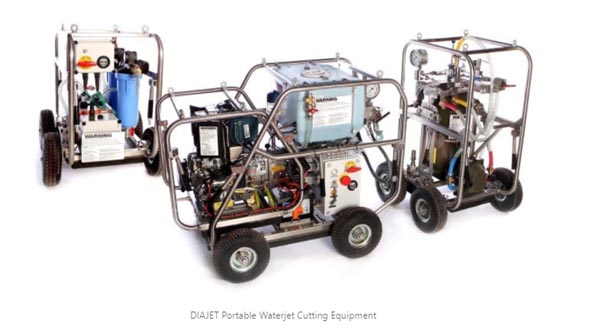 By Gerry McNulty, Business Development Manager
By Gerry McNulty, Business Development Manager
I must say that 2019 was a great year for our DIAJET waterjet cutting business engagement. Having exhibited at several industrial events and customer open days, we gained valuable insights from a range of customers operating in hazardous environments, including Sellafield, Magnox and Babcock.
We also benefited from the experience of our partners (including OMS and NNL) and of course, established relationships with a wider range of organisations and potential customers tackling decommissioning challenges.
The recent lull in attending physical events has given us pause. During this time we have asked ourselves what we know about our customer, and challenged ourselves on what we need to know more about.
Nuclear decommissioning waste management
For instance, in the nuclear decom sector, secondary waste resulting from any operation is a major challenge. In the case of cutting equipment for segmentation and size reduction, the method used has a major impact on the volume and nature of both primary and secondary waste. These can of course present unacceptable environmental consequences and/or clean-up costs - which may also outweigh those of the initial cleaning or cutting operation.
To understand what the customer terms the correct cutting equipment, the seller must consider both the immediate appeal of lower initial capital equipment and its operating costs and account for the longer term (and sometimes less tangible) lifecycle requirements.
Are we playing on an equal footing?
We will all agree that a lifecycle analysis (LCA) approach is the accepted and most sustainable way to assess the cause and consequence of secondary waste and how it is then dealt with.
But here’s the rub.
For equipment and service suppliers to bid on an equal basis, they and the buyer need to understand where the LCA starts and finishes. It is also important to understand what judgements are being used to assess the suitability of each supply. This can be a tricky boundary to set, but without it suppliers might not be bidding on an even playing field.
There’s always a solution
As an advocate of waterjetting, much of my role is working with customers to understand this wider context and clarify where these boundaries are fixed or more porous. For the latter, in my experience suppliers have probably already encountered similar needs for other engineering applications, perhaps from other sectors and are well placed to direct the buyer where to look for answers.
We also continue to develop our technology to address waste minimisation and re-use. We recently performed an abrasive waterjet cutting operation through a 75mm thick steel section using a really small nozzle (0.7mm diameter) at an equally low water flowrate (9lpm).
As you can see from the photo, precision cutting (targeting a massive reduction in the amount of contaminated parent material removed) is well within the parameters of our DIAJET equipment; which in combination with suitable filtration/separation can result in 95% reuse of the abrasive-water.
Better still the equipment is largely COTS available.
Next on our agenda is getting comparable data on competitive (including non-waterjet) cutting systems.
Join me at SNS2020
If you’d like to discuss this further, I’ll be at EEEGR’s SNS2020 virtual event, and would be delighted to have an initial discussion. Drop a post below or send me DM and we'll set something up.
